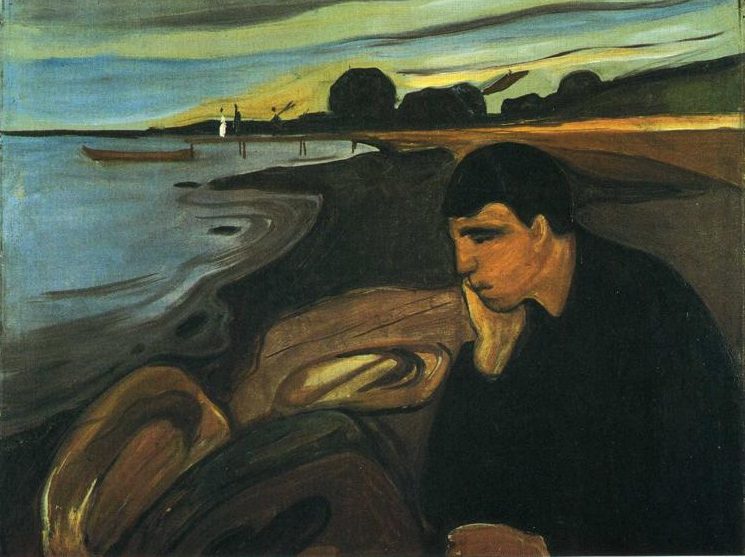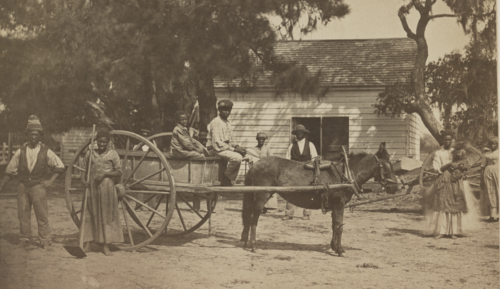Home » Author Identity
Category Archives: Author Identity
The Oregon Trail
Francis Parkman
1848
(Horses, rifles, and knives see a party of adventurers through the land of expansive plains, craggy mountains, buffalo, and the Sioux.)

“Shaw! Buddy!” Imagine a young, spontaneous Yankee calling out to his friend, both of them just out of college. He proposes that they leave the effeminate comforts of the East, and spend a summer adventuring westward into the untamed lands where life is dangerous and fascinating. Francis Parkman explains (ch.II):
“The restlessness, the love of wilds and hatred of cities, natural perhaps in early years to every unperverted son of Adam, was not our only motive for undertaking the present journey. My companion hoped to shake off the effects of a disorder that had impaired a constitution originally hardy and robust; and I was anxious to pursue some inquiries relative to the character and usages of remote Indian nations, being already familiar with many of the border tribes.”
So they did it. In 1846. Francis was 23. And the recollections of that journey, The Oregon Trail: Sketches of Prairie and Rocky-Mountain Life, remain with us as one of the best treatments of the early West that we will ever have. Parkman’s prose has the feel of a chronicle—it is obviously nonfiction, a travelogue. But it is not a ponderous journal of trivia and redundancy through which we must wade for hours to find the few interesting episodes; nor is each sunset a springboard for a forced flight of sentimental fancy in poor imitation of Byron’s Childe Harold or other Old World sketches. Rather, it is an engaging selection of vignettes, personalities, and anecdotes that admit us to the ranks of the “ragamuffin cavalcade” that was Parkman’s expedition. Parkman’s writing is like Parkman himself—the stereotypical American at his best, one might say: direct yet perceptive, practical yet romantic, hearty yet insightful.
Arnold’s early poems
Matthew Arnold
1840-1849
(A man of intellect and of spiritual sensitivity contemplates the purpose of life and its struggles.)

“Unwelcome shroud of the forgotten dead,/ Oblivion’s dreary fountain, where art thou”. What a dark way to begin one’s poetical efforts, at 18 years of age! And we need read no further to suspect (correctly) that in Matthew Arnold we are in for something very different from the Romantics, and quite different also from his Victorian contemporaries Browning and Tennyson. The essence of the distinction is in his preoccupation with the meaning of life, and by extension death and the loss of faith. This spiritual decline that disturbed him so much, often called the maladie du siècle or the “sickness of the century”, had been treated more seriously on the continent, while in England Wordsworth, Keats, and Shelley were grasping at Nature or the humanism of the Greeks for their spiritual anchor. Arnold was a more melancholic, more skeptical poet, and doubted that the sickness could ever be cured, although he certainly loved the ancients (many of his early poems have classical subjects), and he also did look to nature for inspiration. Even as a teen he presaged the Existentialists, and indeed much of the spirit of the twentieth century, in trying to devise a way to preserve our spirituality and sense of wonder while being brutally honest about our mortality and the fleeting nature of all human endeavor. Matthew Arnold was a great poet not mainly because he was imaginative, morally sensitive, and wonderstruck, nor on the other hand because he was freethinking, scholarly, and skeptical; he was great because he was somehow both of these sorts of people at once. If his poetry could be said to have a single goal, it was to merge these two halves of his consciousness, the spiritual and the intellectual.
Uncle Tom’s Cabin
Harriet Beecher Stowe
1852
(Two slaves struggle mightily: one for her liberty, the other for his integrity.)

This novel, the best selling book in the nineteenth century besides the Bible, is a remarkably forceful argument against the world’s most blatant form of widespread institutionalized violation of human rights. It is a collage of slave lives and lifestyles assembled with a thin glue of plot, all combining to urge our sympathies with the slaves and our antipathy to the injustice of their condition. It is an effort to bring free people to the realization that slaves are real persons who have the same sorts of spirits and minds as their masters, and yet they are and will always be subject to all sorts of anguish, suffering, and torture until slavery is abolished. “It is a comfort to hope,” Harriet Beecher Stowe writes in the Preface, “as so many of the world’s sorrows and wrongs have, from age to age, been lived down, so a time shall come when sketches similar to these shall be valuable only as memorials of what has long ceased to be.” We can be thankful that the author’s hope came true– the book served phenomenally well the purpose for which Stowe designed it. Testament to this are its enormous sales, the several hasty rebuttal “slavery isn’t so bad” novels, and, perhaps more than anything else, the comment of Abraham Lincoln when he met the author, calling her the “little woman whose book started this big war”.
Cimarron
Edna Ferber
1930
(The Oklahoma land rush of 1889 gives Yancey Cravat an opportunity to rescue his wife from civilized mediocrity, and head west for the untamed life of the pioneer.)

Yancey Cravat is the Cimarron—the wild one, like an aimless river or a jousting bighorn sheep. He may tote legal volumes as easily as a gun, and be as quick with a Shakespeare quote as with a trigger; and yes, he’s a lawyer and the editor of a socially active newspaper… but this is no milktoast city boy. This is Buffalo-Head, the tall, gruff, steel-eyed pioneer for whom three years in the same place or a single day without some sort of risk or conflict is evidently his idea of hell. And, no doubt, the wife of such a one is bound to be some kind of woman: Sabra, a sharp, spirited, strong, self-sufficient saber of a woman. In fact, although most assessments of this book will tell you that its permanence lies in its presentation to the world of the unforgettable Yancey Cravat, who is it that ties the book together? Whom does the narrative follow, when Yancey’s itchy traveling bone takes him to Alaska or the Spanish-American war? Not him, but the determined, toiling Sabra. Granted, she lacks the explosive flash of her husband–her way is much too pragmatic to put her in much danger or make her many enemies. But she is really the central character of the book, the one who grows, the one who succeeds in adapting herself to the various jolting cultural shifts that get thrown into her path by the errant Yancey, or by her son, or by the discovery of oil. At first entry into the fledgling land rush town of Osage, Oklahoma, fresh from the overprotection of her family the proper Venables of Wichita, she breaks into sobs when kissed by a stranger on the street. But give her eight or nine years, and she’s riding in the middle of the night into an Indian reservation during a mescal ceremony and demanding that her unconscious son be thrown onto her cart so she can bring him home. But of course, yes, we do want to hear about Yancey, despite… or maybe partly because of… his refusal to stick around. He’s idealistic, imposing, and indomitable. Take one particular tent meeting, for instance: in the course of giving a sermon, he manages to work in a self-defense killing—yes, the actual killing, not the story of a killing. And when warned that his pro-Indian editorials are going to get him killed, his reply is simply the unearthly death-scream of the Cherokee. (more…)



The Hunchback of Notre-Dame
June 16, 2019 / 2 Comments on The Hunchback of Notre-Dame
(Notre-Dame de Paris)
Victor Hugo
1831
(Love for a young gypsy woman allows an ugly man to rise above the world’s hatred of him, and to show his inner beauty).
Beauty and beast stories are thousands of years old. Here is how they generally go: a beautiful maiden somehow must associate with a character of less-than-alluring appearance, such as an animal, a god in disguise, or a magically uglified human. The girl eventually sees beyond the grotesque exterior to the real person inside, and falls in love. Then very often the whole moral is promptly compromised by the male character’s transformation into the handsome prince. Ah—it’s really about outward appearance (and wealth) after all! I write this with a smirk, as in fact those stories are not claiming that outward appearance should have no importance, but just that love can be demonstrated to be rooted in deeper things if we remove good looks as an experiment. (By the way, we’re generally talking here about removing the man’s good looks. Removing the woman’s good looks is far rarer in literature, as any student of human behavior could have predicted.)
Victor Hugo, perhaps the wisest of the great French novelists, wrote the perfect beauty and beast story—indeed, could do so only because he was wise. He understood beauty and was true to it in all its manifestations; and he understood ugliness and was fearless and trenchant in portraying its effects and implications. The novel is fundamentally about beauty: of Notre Dame cathedral, of Quasimodo its deaf mutant bell-ringer, of Esmeralda the gypsy girl. The beauty is very different in the three examples, except in fragility, which they share—these three beautiful things, a building, a beast, and a belle. And their fragility is due to ugliness, which likewise takes diverse forms.
(more…)